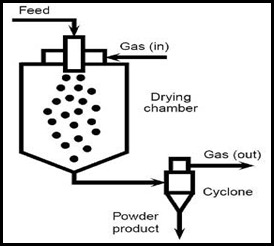Firstly , Beneficiation of cement rock , and
then the actual method of preparation of cement .
BENEFICIATION OF CEMENT ROCK :-
What is " Beneficiation" in the first place ??
Simply , It is the process of improving the physical and chemical properties of the raw materials so that we can recover the final product with more efficiency , and thus , more profit !!! It is the process of separating the gangue from the required ore . It is also known as "mineral dressing" . These beneficiation methods are based on the properties of fluid mechanics and adsorption .
The limestone obtained from the mines is not pure and efficient enough for use in the production of cement , hence the need to beneficiate it .
The operations used can be grinding , classification , flotation , thickening and much more accordingly , keeping the quality of the ore in mind .
The process consists of the following steps :
1) Firstly , the ore is examined , magnetic impurities are removed easily by respective methods and the ore is then pulverized to a fine mixture . Pulverizers are mechanical devices , including ball mills , tube mills , etc , which are used for grinding the mixture into a fine powder .
 |
| A TYPICAL PULVERIZER |
2) If the ore is usable enough , then it is directly sent into the "Hydro separator" . The part of the ore which is not so suitable enough is further processed , they are sent into "Rake Classifiers" .
Hydro separators are devices in which solids in suspension are agitated by hydraulic pressure or stirring devices , thus separating the ore . It is normally used to separate the ore from water . Speaking in common sense terms - HYDRO = water , SEPERATOR = device to separate . :P
Rake Classifiers are a type of mechanical classifier which utilize reciprocal rakes on an inclined plane to separate coarse particles from the fine ore . The fine material is overflowed , while the coarse waste material is discharged by means of the inclined plane .
 |
| A TYPICAL HYDRO-SEPARATOR |
3) The over-flown product from the rake classifier is then sent into a "Homogenizer" , which allows only one part of the ore , for us , the useful part and from there , it is sent into 3 Flotation Cells - namely Beater , Enriching and Stripping cells .
 |
| A TYPICAL FLOTATION CELL |
The BEATER cell is the place at which the cross-currents of the ore and the Frothing agent meet .
Then , the STRIPPING cell removes the sedimented ore .
The ENRICHING cell enriches the ore with the froth and thus we obtain pure ore particles in the ore . For more efficiency , the froth reagent water is continuously recovered .
4) This product meets the already sent pure product at the hydro-separator , where the suspended ore particles in water are recovered , thus obtaining pure limestone slurry which can be used for cement production .
Note that in wet process we obtain a slurry , while in the dry process we get a powdery mixture itself .
The reagent water is removed by the hydro-separator , thus giving us PURE BENEFICIATED LIMESTONE ROCK SLURRY , which is ready to be used in the next stage .........Keep logged in !!!


























